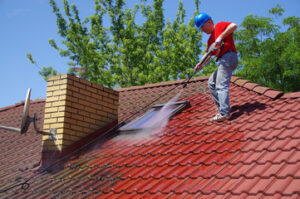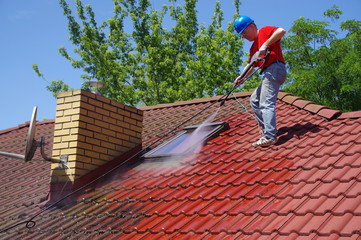Roof cleaning services are a great way to extend the life of your roof. They can help remove algae, mildew, moss, and oxidation from metal roofs. Cleaning your roof can also improve its aesthetics and increase its function. It will make your home or business look newer and more appealing. To learn more about roof cleaning, contact a local roofing service today. You’ll be glad you did! This article will explain why roof cleaning is a great idea for your property. 
Pro Gutter Cleaning Charleston not only improves your home’s appearance but will also prevent serious roof damage. Many homeowners neglect this task and let the debris build up. Over time, this debris can act as a home for mold and insects. These organisms can cause your roof to deteriorate faster, which can lead to costly repairs and premature replacement. Roof cleaning services will extend the life of your roof and will prevent costly problems in other areas of your home.
First of all, make sure you hire a reputable roof cleaning company. You can learn about a company’s reputation by reading customer reviews on major review sites or checking with the Better Business Bureau. You can also ask questions to get the information you need to choose the right company. This way, you won’t end up hiring someone who won’t meet your needs.
Secondly, consider what kinds of fungi, algae, and other organisms may be on your roof. The presence of these organisms can cause your roof to leak. In addition, it can also cause problems for your gutters. If you don’t clean them regularly, they can cause blockages. These problems can even affect your home’s interior and exterior design.
Whether hiring a professional or cleaning the roof yourself, you should always follow safety guidelines. First, make sure that you wear rubber shoes and rubber soles that prevent you from slipping. Also, wear eye and skin protection. Wearing the proper protective gear will protect you from falling and damaging your property.
Soft washing is another method for cleaning your roof. A soft washing solution is used for this process, and it uses low-pressure water that is similar to a garden hose. This solution removes dirt, stains, and moss. It can cost between $0.30 and $0.75 per square foot, and can be very helpful in protecting your home from damage. Besides, it is eco-friendly. It is also gentle enough not to cause any harm to the asphalt shingles.
It is very important to maintain the cleanliness of your roof. The accumulation of algae, moss, and mold can cause serious damage to your roof. Moss and algae can eat away at the shingles and make them prone to cracking and warping. Furthermore, mold and mildew on your roof will cause your gutters and downspouts to clog up with water and cause flooding.
Roof cleaning services may use various cleaning solutions and techniques to remove moss and algae. ARMA recommends a 50/50 solution of household strength sodium hypochlorite and water to effectively remove algae and moss. Additionally, you can use a zinc strip on your roof to prevent algae from growing back.
While algae and lichen growth are a common problem on roofs, they can also damage your roof’s shingles. Once algae begins to invade the shingles, they eat away at the granules that are essential for the reflective quality of the roof. This will eventually result in roof leaks and increased energy bills. It will be important to regularly clean your roof to keep it looking great and performing optimally. This is a surefire way to get a hefty repair bill later.
Another common problem on your roof is black streaks. These are caused by algae feeding off the limestone filler that is found in shingles. If you have a north-facing roof, black streaks can ruin the look of your home. It will reduce the lifespan of your roof and also compromise the shingles’ ability to block UV rays. Therefore, experts recommend cleaning your roof every 10 to 15 years.
Soft washing is an excellent method of cleaning most types of roofs. A biodegradable cleaning solution is sprayed on the roof and penetrates the material to remove built-up residue. This cleaning solution is then gently rinsed away with low-pressure water. This process can take anywhere from two to five hours.
